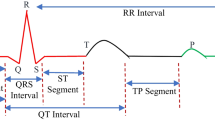Abstract
A wearable wireless cardiopulmonary sound sensing system with a low-power sound sensor stick connected to the wireless mobile network is proposed in this work. The system is composed of three parts, namely, the wearable sound sensor stick attached to the user’s chest for cardiopulmonary sound recording, the portable base station (PBS) for wireless data transmission which is usually a smart phone, and a remote data center for long-term data storage and analysis. An effective signal processing method is developed for the data center to analyze the cardiopulmonary sounds for health information extraction such as the heart rate. A prototype system has been built to validate the proposed system for lifetime tracing of cardiopulmonary sounds. The prototype sound sensor stick weighs 29 g, and the battery life is over 48 h with a 130 mAh battery. Experimental results from the prototype system are given, including the signal processing results and the measured power consumption. The heart rate calculation error of this system is within ±1 %.














Similar content being viewed by others

References
Tilkian, A. G., & Conover, M. B. (2001). Understanding heart sounds and murmurs with an introduction to lung sounds (4th ed.). Philadelphia: W.B. Saunders Co.
Yazicioglu, R. F., et al. (2009). Ultra-low-power wearable biopotential sensor nodes, Engineering in Medicine and Biology Society, 2009. Annual International Conference of the IEEE EMBC 2009.
Fensli, R., Gunnarson, E., & Gundersen, T. (2005). A wearable ECG-recording system for continuous arrhythmia monitoring in a wireless tele-home-care situation. Proceedings of the 18th IEEE Symposium on Computer-Based Medical Systems, 2005. IEEE.
Poon, C. C., Wong, Y. M., & Zhang Y. T. (2006). M-health: the development of cuff-less and wearable blood pressure meters for use in body sensor networks. Life Science Systems and Applications Workshop, 2006. IEEE/NLM. IEEE.
Shaltis, P. A., Reisner, A., & Asada H. H. (2006). Wearable, cuff-less PPG-based blood pressure monitor with novel height sensor. Engineering in Medicine and Biology Society, 2006. 28th Annual International Conference of the IEEE EMBS’06. IEEE.
Lee, J. A., et al. (2007). Wearable accelerometer system for measuring the temporal parameters of gait. Engineering in Medicine and Biology Society, 2007. 29th Annual International Conference of the IEEE EMBS 2007. IEEE.
Brusco, M., & Nazeran, H., (2006). Development of an intelligent PDA-based wearable digital phonocardiograph. Engineering in Medicine and Biology Society, 2005. 27th Annual International Conference of the IEEE-EMBS 2005. IEEE.
Liang, H., Lukkarinen, S., & Hartimo, I., (1997). Heart sound segmentation algorithm based on heart sound envelogram. Computers in Cardiology 1997. IEEE.
Kumar, D., et al. (2006). A new algorithm for detection of S1 and S2 heart sounds. Acoustics, Speech and Signal Processing, 2006. ICASSP 2006 Proceedings. 2006 IEEE International Conference on. Vol. 2. IEEE.
Jiang, H., et al. (2010). A SoC with 3.9 mW 3Mbps UHF transmitter and 240 μW MCU for capsule endoscope with bidirectional communication. Solid State Circuits Conference (A-SSCC), 2010 IEEE Asian. IEEE.
Ouchi, K., & Suzuki Takuji,. (2002). LifeMinder: a wearable healthcare support system using user’s context. Proceedings of 22nd International Conference on Distributed Computing Systems Workshops, 2002. IEEE.
Malhi, K., et al. (2012). A Zigbee-based wearable physiological parameters monitoring system. Sensors Journal IEEE, 12(3), 423–430.
Durand, L. G., Pibarot, P. (1995). Digital signal processing of the phonocardiogram: review of the most recent advancements[J]. Critical Reviews™ in Biomedical Engineering. 23, 3–4.
Chae, M., et al. (2008). A 4-channel wearable wireless neural recording system. Circuits and Systems 2008. IEEE International Symposium on ISCAS 2008. IEEE.
Tapia, E. M., et al. (2004). MITes: Wireless portable sensors for studying behavior. Proceedings of Extended Abstracts Ubicomp 2004: Ubiquitous Computing.
Martin, T., Jovanov, E., & Raskovic, D. (2000). Issues in wearable computing for medical monitoring applications: a case study of a wearable ECG monitoring device. The Fourth International Symposium on Wearable Computers. IEEE, 2000.
Acknowledgments
This work was supported, in part, by Tsinghua Internal Research Fund, Broadcom Foundation, and Shenzhen Nanshan Key Lab Fund No. KC2012ZDZJ0012A.
Author information
Authors and Affiliations
Corresponding author
Rights and permissions
About this article
Cite this article
Yang, K., Jiang, H., Yang, W. et al. Lifetime tracing of cardiopulmonary sounds with low-power sound sensor stick connected to wireless mobile network. Analog Integr Circ Sig Process 81, 623–634 (2014). https://doi.org/10.1007/s10470-014-0424-8
Received:
Revised:
Accepted:
Published:
Issue Date:
DOI: https://doi.org/10.1007/s10470-014-0424-8



